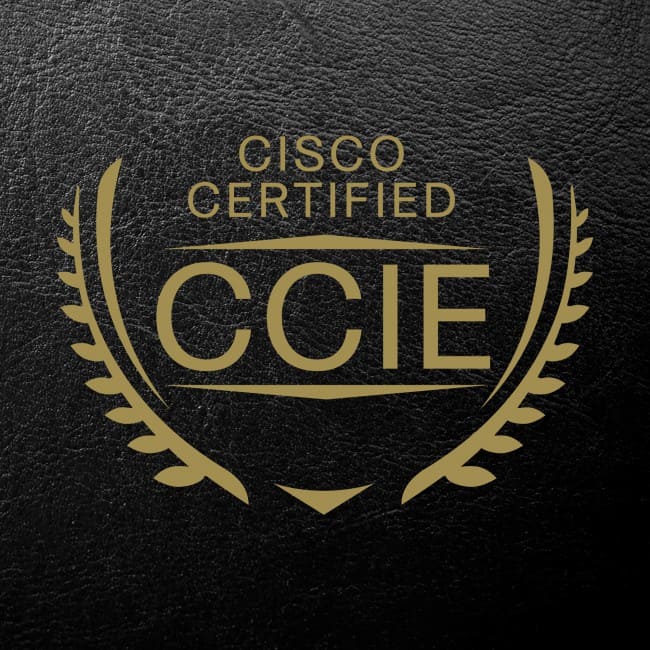In R&S direction, we are here to talk about the entry steps:
1. On the familiar reading, from CCNA to CCNP class books, a total of five you need to read my own in detail. After reading two times is considered to be able to get started then look at the NA and NP online relevant videos to see if your understanding is the same as the tutor's explanation in the video or not and start taking notes. Further, find a training institution, attend an NP course. I joined SPOTO and the quality is quite good. Remember, the above steps it can be omitted if you would like to be a paper NA or NP
2. About practice, you have to prepare a laptop and install two recommend software as dynamic or GNS3, practice with the Lab according to the topology and then start from NA to NP experiments and practice them again and again
3. About brainstorming, in the above 1 and 2 processes, try to think, simulate the scenarios and ask a few more reasons such as when a package is sent from the computer to the website then what changes in the second and third layers of the packet? What did the Switch and Router do with these packets?
Next, we talk about the exam, preparation of the exam and before. Prepare for the exam, read TCP/IP Volume 1 and Volume 2 carefully and practice the commands with they mentioned twice. When you practice on the second time, mark the results and organize them into your own notes and it is every experiment.
For Exam preparation, firstly find a reliable training institution so that you can concentrate on preparing for the exam. Other things are supported by the lab staff (like signing up).
Secondly, you must take classes and listen to every configuration. Once again (Note: the difficulty of IE version and NP experiment is not a level at all. In 2009, 7 versions need to be sorted).
Third, prepare for the written test. In fact, the simplest one is this, because there is a question bank in general training institutions. It is suggested to reserve three days of back-to-back questions study.
Fourth, after the written test passed, estimate the time for the exam. It is recommended to leave at least three months for it to deal with those configurations and make the time requirements clear to the laboratory.
Fifth, the configuration has to be practiced at least three times. The first time you only need to follow and configure out with the result. This first practice is the most time-consuming. After finished, don't rush for the second time and study the configuration carefully in about three days. Look at the difference between your own answer and the standard answer then drop it down and ask the teacher. Try the second time and use your own answer to see if it is correct. After second practice, please ask the lab teacher or classmate to add mistakes for you, about 7 or so, it is because 3-5 mistakes usually appear during the exam, I have encountered 5. The ability to debug is based on how the previous skills have been played, that is the experiment of NA to NP and whether the experiments in Volumes 1 and 2 are serious. On the third, the back version, intensive training according to the examination arrangement and you just practice each configuration every day as usual and arrange the troubleshooting after the configuration part is finished.
Fifth, prepare before the exam, arrange the accommodation in advance, go to the exam venue one day before the exam, no longer arrange the operation review two or three days before the exam, focus on review of the configuration
From the career development of network engineers:
The general situation has the following development path. The technical support engineer job categories are:
After-sales - pre-sales - project management
After the sale, it can be divided into:
lResident engineer - To understand some techniques, but lack of project experience often used to examine and train new people
lFirst-tier engineer - Engineers who need to go to the customer site to deal with various problems. There are certain requirements for technology, and the company often trains new people to do it. If you have a tough problem, you can ask the company for help
lSupport engineer - Need a certain technical background and project experiences. When a frontline engineer encounters a problem, he should be able to give a solution as soon as possible
lSecond tier engineer - Need a lot of project experience, solid technical skills. Need to have the ability to control the project macro
lPre-sales engineer
lProject management - Not only have a certain project experience, but also a team. Team management, departmental collaboration, resource allocation, etc. all need to think
Therefore, in the process of the exam, we must also learn some experience of the project.
1. For CCNP certification, you must first obtain CCNA certification. CCIE certification does not require CCNA and CCNP and you can go for exam directly
2.Valuable content: CCNA, CCNP back question bank can be certified which is low in value
3. Some high-paying jobs require CCIE certification, while normal network engineer recruitment generally writes CCNP, HCNP priority, and so on.

 Join Telegram Study Group ▷
Join Telegram Study Group ▷













